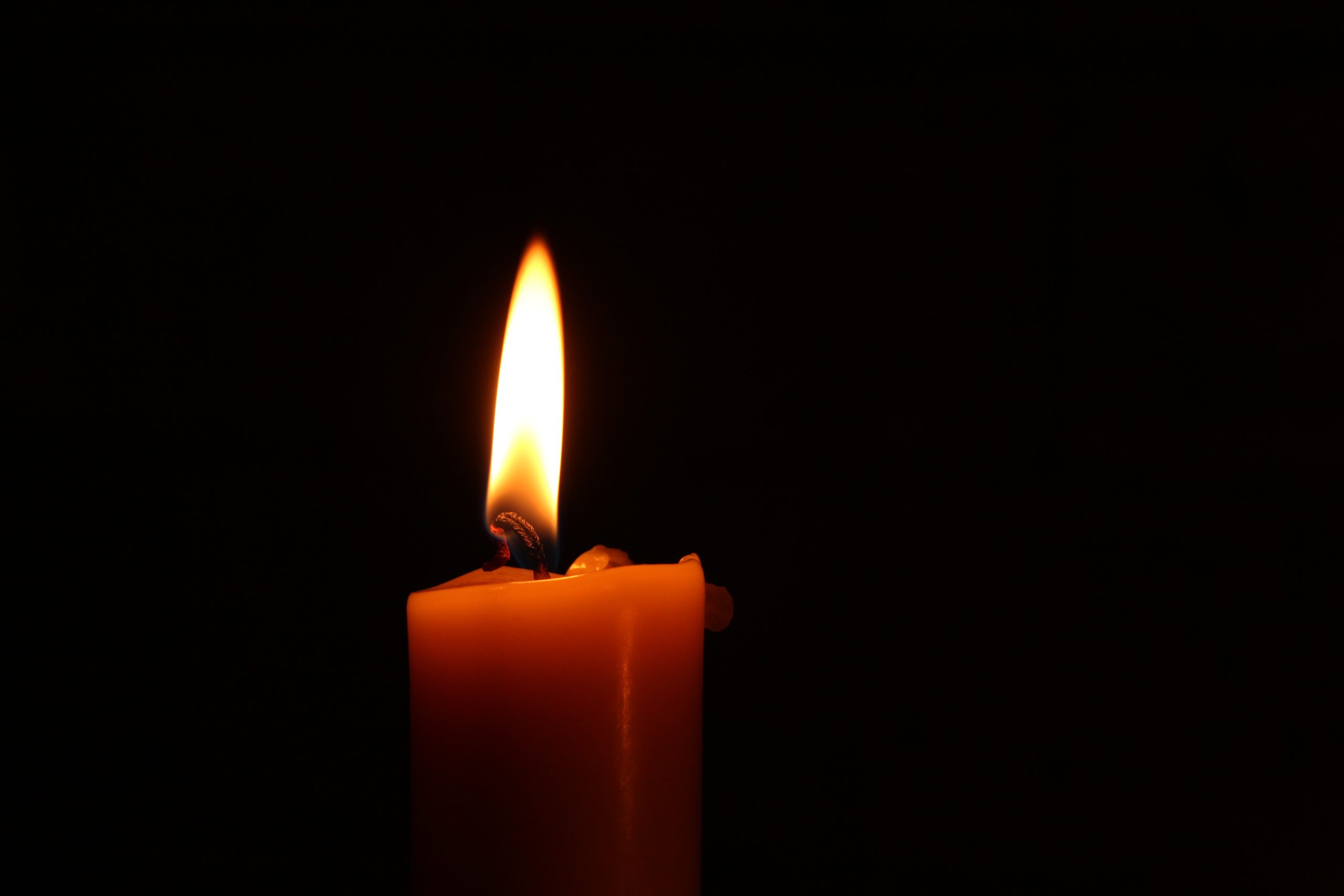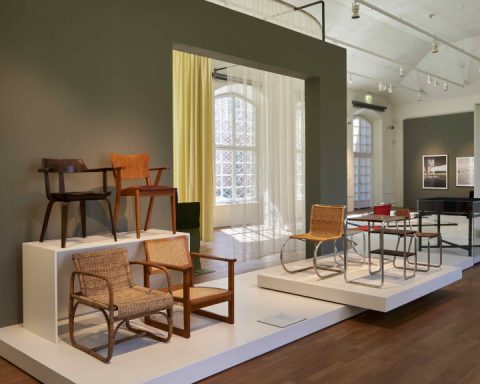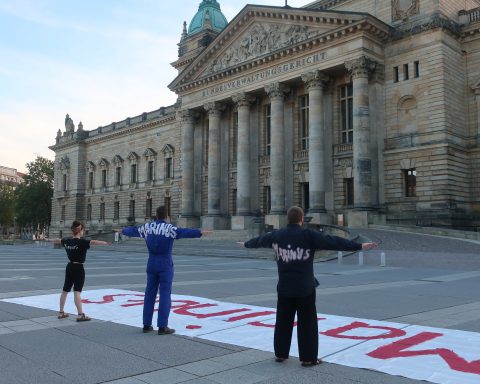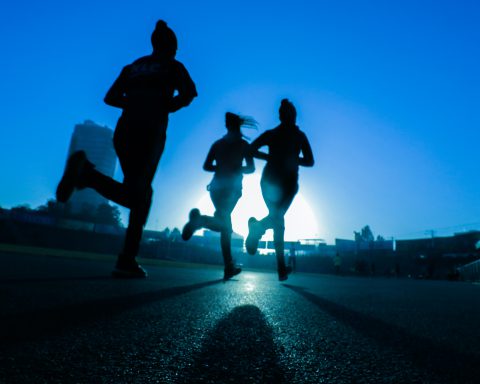Outside of Leipzig on the A9 highway, you’ll pass a big sign that says “Friedliche Revolution 1989.” Along with Bach, the Völkerschlachtdenkmal and Gondwanaland, these highway signs display Leipzig’s biggest points of pride. If you have spent some time in Leipzig, you have probably seen some traces of the city’s not-so-distant history.
Whether you’re new to this city or just new to learning about this historical movement, the events of Autumn ’89 are central to East German identity and close to the people’s hearts. If you want to connect to the people and the place, it’s well worth reading up on this important part of history.
How did the Peaceful Revolution begin?
Without backing up too far in the timeline, it is enough to know that what set the stage for the Peaceful Revolution was increasing dissatisfaction with life in the Deutsche Demokratische Republik (DDR, or GDR in English), a Soviet-controlled socialist state in the Eastern Bloc of post-World War II Germany. The regime in power, the Socialist Unity Party (SED), controlled the economy and enforced a society based on Marxism-Leninism. After many people tried to flee the state, the government strengthened its borders and erected a wall in Berlin in 1961, essentially dividing Europe into East and West by what is referred to as the “Iron Curtain.”
Sure, the government provided some security and stability to some extent. But people were not afforded much freedom or movement. Your neighbor, classmate or colleague could be spying on you. Suspicions of subversive activity or thought were often met with severe punishments from the East German police force, known as Stasi (or Staatssicherheit). Some were sent to prison and a few were even killed. You couldn’t travel outside the country, even to attend a family wedding or funeral. Many tried to cross the border in spite of this and were captured or lost their lives.
Protests and attempts for reform did occur throughout the Eastern bloc, such as in Hungary in 1956, Czechoslovakia in 1968 and East Germany in 1953. However, these uprisings ended in violent suppression by Soviet forces, which meant that few in East Germany had hope for a peaceful solution. The regime had effectively established a culture of fear in its people, which after nearly four decades, had started to sour into anger.
In 1989, a political party called the Neues Forum (“New Forum”) was established to demand official dialogue about reforms like free elections and travel. While unrest had spread throughout the DDR, protests in Leipzig gained particular momentum due to its distance from headquarters in Berlin. As one diplomat told Spiegel, “people were more willing to take risks outside of Berlin.” In addition, the Leipzig Trade Fair brought in people from the West, which in turn gave the city more exposure and connection to the other side of the Iron Curtain. The attention on Leipzig’s Peaceful Revolution was critical to die Wende (“the turning point”) in the chain of events that eventually led to the reunification of East and West Germany.
Gatherings called “Prayers for Peace” had been ongoing in Leipzig since 1982 at Nikolaikirche. Held on Monday evenings when party members were obliged to attend party meetings, these meetings provided a safe space for people to speak freely. Since 1987, the “Prayer for Peace” gatherings had been attracting more and more people, and would become key for what came to be known as the Montagsdemonstrationen – “Monday demonstrations.”
What makes 9 October 1989 so important?
Known as Der Tag der Entscheidung (“the day of the decision”), the 9th of October marked a significant turning point in the political movement. The Stasi was prepared for a clash, with hundreds of police at the ready and hospitals freshly stocked with supplies, expecting to receive people injured in violent clashes. But the people showed them otherwise, and hence the “Friedliche Revolution” (“Peaceful Revolution”). With this event, the authority of the SED was effectively overpowered.
If you hear people talk about the 9th of October, you’ll hear words like “miracle” come up again and again. That such a large demonstration occurred without any bloodshed or destruction was almost unthinkable, especially considering that the people went up against a regime that was notorious for violence.
What happened in the aftermath of the Peaceful Revolution?
In the weeks following, Montagsdemonstrationen in Leipzig and other parts of East Germany grew. Around 500,000 people marched in Leipzig on 6 November. The rising numbers and seemingly unstoppable sentiment forced the government to engage in dialogue and give into the demands of the people. About one month later, the world watched as the Berlin Wall came down, setting the wheels in motion for a journey toward reunification.
Want to know more?
If you want to learn more about the Peaceful Revolution, I recommend taking yourself on a tour of significant places in the city center with the Leipzig ’89 app. You can also visit the Runde Ecke and Zeitgeschichtliches Forum Leipzig museums (some information in English) or listen to the podcast Wie war das im Osten? (in German) for insight into life during the DDR.
And of course, join the rest of the city in celebrating the Leipzig Lichtfest in the coming weeks (4 September – 9 October). An art project, commemorating the dates of the Monday demonstrations mentioned above, will trace the steps of the Peaceful Revolution with a pathway of lights leading up to the main celebration in Augustusplatz on 9 October.
See you there!









